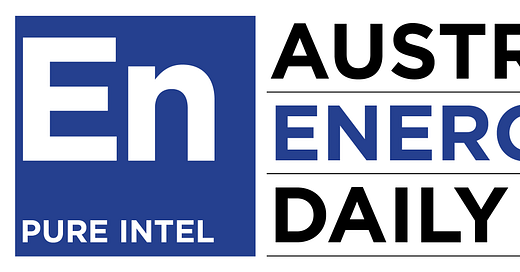Day 45: Not entirely dead
An introductory weekday newsletter from Schwartz Media. Counting the days since Australia had an energy policy.

Good morning and welcome to day 45.
Today in summary: the NEG may be officially dead, but unofficially much of it is still alive, according to Energy Security Board Chair Kerry Schott; the Victorian government coffers continued to flow into grant funding for renewables projects ahead of November’s state election; and the Greens expanded on their energy policy with a plan for renewable energy zones and a A$2.8 billion grid transformation fund.
— Charis
Current policy spin level: 💨💨
“The NEG may be officially dead, but unofficially it‘s not,” Energy Security Board Chair Kerry Schott told the All Energy conference today. Schott is hopeful of more progress on the NEG’s reliability obligation once COAG meets later this year. She’s also hopeful the country will get past the current “poisonous” issue of emissions targets.
“We’ve got a number of states that are in election mode too, which makes practical policy in this space very difficult right now, but I would hope that by the end of next year we’ve got an emissions target.”
Electric vehicle charging software firm Chargefox has received a A$1 million grant from the the Victorian government to help deliver Australia's first ultra-rapid electric vehicle charging sites by the end of October. The government also announced funding for a demonstration microgrid project for farmers.
The Australian Greens have proposed a network of 30 renewable energy zones, supported by a A$2.8 billion “grid transformation fund” in the latest addition to their energy policy platform. Greens MP Adam Bandt said the party would push for adoption of the policy should it gain the balance of power at the next federal election.
“Australia’s grid is still largely a set of wires out to coal mines. Government now needs to build the grid out to where the sun shines and the wind blows,” Bandt said.
The Commentariat
The ACCC’s move to publish LNG export prices is a “step forward in the evolution of Australia's domestic energy market,” writes the Australian Financial Review’s Matthew Stevens.
“For the past three years at least the delicate state of east coast gas markets has been the fulcrum of the febrile and sometimes excessively panicked national energy debate. The market disruption long promised by the arrival of three gas export gateways in Gladstone was amplified by events that should have been anticipated and some that could not have been.”
The competition regulator will publish LNG 'netback' prices on its website every two weeks, in a bid to reduce the information imbalance between gas buyers and sellers.
News that the world’s biggest solar project has been cancelled is no surprise, writes Greentech Media’s Jason Deign. The US$200 billion Saudi project by SoftBank and the Saudi Public Investment Fund had raised skepticism, partly because of technical concerns over how it might be integrated into the grid.
“According to The Wall Street Journal, the announcement of the freeze was greeted with relief by Saudi energy officials. “Everyone is just hoping this whole idea would just die,” one said.”
Three more things
Tapping excess electricity generated by households is a better alternative to building new power stations in order to prevent blackouts, according to Australian Energy Market Operator chief Audrey Zibelman. She said AEMO paid A$60 million last year to buy in extra electricity from households with rooftop solar panels during periods of peak demand. “To me, that's just a twenty-first century way to manage a power system," Zibelman said.
Queensland Energy Minister Anthony Lynham has released new guidelines for solar farms. “For traditional owners, communities and landholders, the guidelines outline approval processes, technical and environmental considerations, and ways to give feedback,” Lynham said. For industry, the guidelines provide a “one-stop-shop on navigating government development approvals, expectations about best practice to engage the local community, location guidance and the legal framework which governs solar farm developments”.
The Australian Energy Market Operator has been impressed by the performance of South Australia’s “Big Battery” (formally known as the Hornsdale Power Reserve) and is encouraging the introduction of other like technology into the grid. “AEMO's data shows that the battery can dispatch power far more rapidly and precisely than conventional thermal power stations and more swiftly and accurately than the market operator thought possible — while also pushing down prices.”
This is an introductory service while we’re building a comprehensive daily paid online publication, coming in early 2019.
We’re not here to take sides, simply to cut through the noise, and help you make sense of the emerging policy and market trends you need to be across. We call it pure intel. You can read more about us here.




